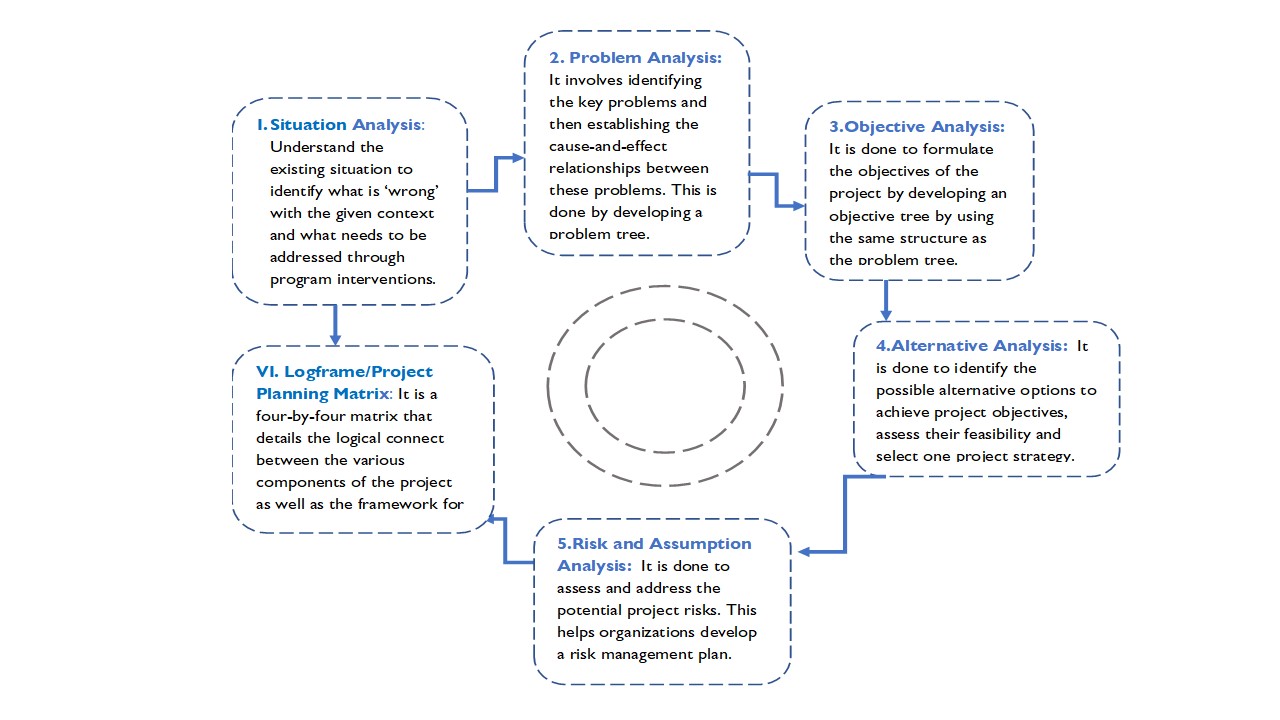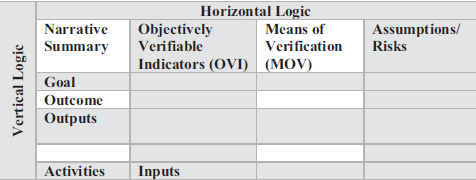Logical Framework Approach (LFA)

Since program measurement – monitoring and evaluation – need to work simultaneously with the project cycle; it is important to plan for them alongside the project design. The Logical Framework Approach is a tool to organise and structure our thinking for project design and management purposes. It is primarily used by donor agencies, Non-Governmental Organisations (NGOs) and government agencies to facilitate efficient project management by setting performance standards which provide the framework for Monitoring and Evaluation (M&E) (Singh et al., 2017).
The Logframe analysis makes it easier to plan and manage a project as one can monitor how actions lead towards the desired goal (The Guardian, 2015)with a step-by-step approach. The situation and problems are first deconstructed, suitable project objectives are chosen, strategies to achieve these objectives and their alternatives are explored, and risks are accounted for. Taken together, all these steps ultimately culminate in developing a project planning matrix (steps as described in diagram below). The Project Planning Matrix or Logframe is 2×2 matrix, which helps evaluators systematically represent and trace the project’s causal pathways, develop measurement indicators, plan the means of verifying them, and underline the risks and assumptions underlying the project implementation.
The steps involved in conducting Logframe Analysis are as follows (Singh et al., 2017).
The Logframe matrix is traditionally divided into four rows, which describe the long- to short-term objectives ranging from top to bottom; and trace out the steps to achieve and measure them, left to right (The Guardian, 2015). The Structure of the Logframe can be understood from the following template and example.
source: (Singh et al., 2017)
However, prior to embarking on developing or interpreting a logframe, it will be important to understand the use of key terms:
Vertical logic
Goal: It reflects the larger aim of the project.
Outcome/Purpose: It highlights aspects like what will be achieved, who will benefit, and by when.
Outputs: It specifies the results which the project will generate.
Activities: These are tasks that need to be completed for achieving the output.
Horizontal logic
Objectively Verifiable Indicators: Performance indicators to measure achievement of short and long-term goals
Means of Verification: Tools used to collect information on indicators
Risks or Assumptions: Assumptions or pre-conditions that need to be met, to conduct activities, and achieve outputs, outcomes and goals.
The logframe matrix can be understood with the help of following sample logframe, as embedded below. (Read bottom to top, and left to right).
| Narrative Summary | Objectively Verifiable Indicators | Means of Verification | Assumptions/Risks | |
|---|---|---|---|---|
| Goal | 10% increase in the number of Grades 5-6 primary students continuing on to high school within 3 years | Percentage of Grades 5-6 primary students continuing on to high school. | Comparison of primary and high school enrolment records. | N/A |
| Outcome | Improve reading proficiency among children in Grades 5-6 by 20% within 3 years. | Reading proficiency among children in Grades 5-6 | Six monthly reading proficiency tests using the national assessment tool. | Improved reading proficiency provides self confidence required to stay in school. |
| Outputs | 1. 500 Grade 5-6 students with low reading proficiency complete a reading summer camp | Number of students completing a reading summer camp. | Summer camp attendance records. | Children apply what they learnt in the summer camp. |
| 2. 500 parents of children in Grade 5-6 with low reading proficiency help their children read at home. | Number of parents helping their children to read at home. | Survey of parents conducted at the end of each summer camp. | Children are interested in reading with their parents. | |
| Activities | 1. Run five reading summer camps, each with 100 Grades 5-6 students who have low reading proficiency. | Number of summer camps run. | Summer camp records. | Parents of children with low reading proficiency are interested in them attending the camps. |
| 2. Distribute 500 “Reading at Home” kits to parents of children attending summary camps. | Number of kits distributed. | Kit distribution records. | Parents are interested and able to use the kits at home. |
Source: (Tools4dev, n.d.)
The US military originally developed the tool in the 1960s, after which it was later adopted by USAID for its development projects. Since then, it is often used as a standard approach required by donors for grant applications (The Guardian, 2015), and monitoring and evaluation plans.
List of recommended resources:
For a broad overview

A Practitioners’ Manual on Monitoring and Evaluation of Development Projects
Written by Kultar Singh, Dharmendra Chandurkar and Varun Dutt, Chapter 2 of this book explains the concept of Logframe analysis and provides the rationale for using it. It also explains steps in Logframe analysis with the help of an example.
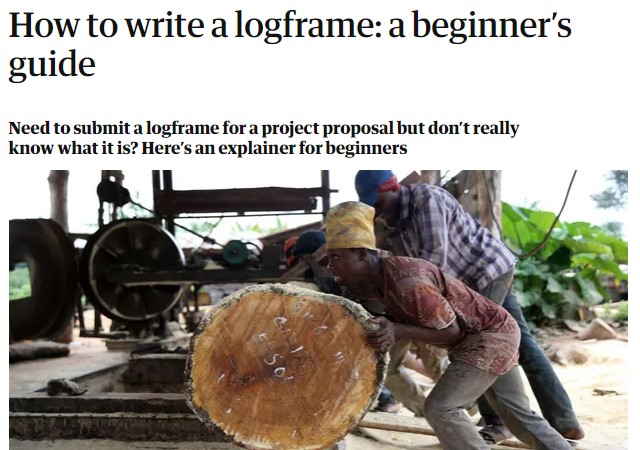
Published by The Guardian, this article explains the concept of Logframe for beginners with the help of an example.
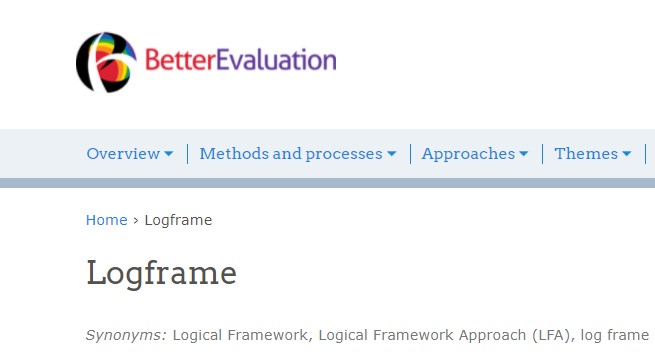
Developed by Better Evaluation, this post defines the Logframe and the key terms associated with it. It talks about the potential disadvantages, and potential alternatives to the Logframe to tackle the disadvantages. It also provides a template and tips for using it.
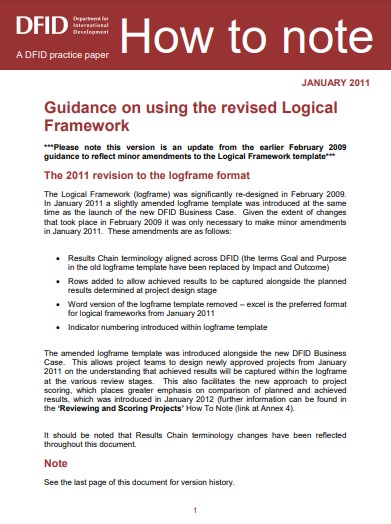
Although especially designed for professionals working with DFID, practitioners will benefit from this guidance document to effectively make use of the (revised) logical framework (Logframe) in designing and managing projects with the help of examples and provides a checklist for completing the Logframe.
For in depth understanding
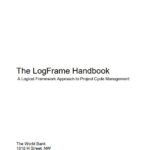
Developed by World Bank, this handbook summarises the rationale and essential elements of the Logframe for practitioners. It also provides guidelines for constructing Logframe along with sample Logframes.


